Archives
What happens when tree roots grow in sewer pipes #2
The growth of tree roots in sewer pipes is probably the most destructive single element that faces those maintaining a sewer collection system today. 
Sewers are ageing expensive assets that only attract public attention when they fail. There are over 35,000 kms of water and sewer pipes in Sydney and 60% of all collection systems are made up of pipes with a diameter of 9 inches (225 mm) or smaller. The potential for tree root intrusion to inhibit flows, produce blocked drains and damage valuable pipes, is enormous.
Tree roots normally do not grow underwater and seldom cause problems where ground water covers the pipe. But in most areas, this is not the case.
Tree Roots Grow One Cell at a Time
When a seed germinates, it adds one cell at a time toward the best environment from which it might extract nutrients and moisture. The growing point of a tree moves best through loosely cultivated soil.
The most common practice used to lay sewer pipes is in an open trench. The back-filled soil offers a good growing medium for tree roots. Because the flow in sewer pipes is a higher temperature than the soil, this causes a condensation to appear on the crown of the pipe.
As the warm moisture from the sewer pipe evaporates up through the soil, the vapours offer an excellent trail for the tree roots to follow. If a vapour leak exists in the pipe, the roots concentrate its efforts at that point. Since some pipe joint compounds are of nutrient based material themselves (like rubber rings or sand cement mix), the root may entirely girdle before entering the pipe.
Roots Allow Accumulation of Debris
Once inside the sewer pipe, the root takes on the appearance of a “veil” or “horse tail” type structure. If flows in the pipes are fairly constant, the root mass hangs down like a veil to the normal flow level where they accumulate deposits of grease, slime and other debris.
Conventional methods of removing tree roots by cutting with an electric eel or a “Rattlesnake” high pressure water drain cleaner tend to increase regrowth; similar to pruning a tree. Removing tree roots inside the pipe solves the immediate problem of clearing the blocked drain, but does nothing to retard the tree root regrowth or destroy the tree roots outside the pipe.
This removal, regrowth and removal cycle of cutting and tearing roots can destroy the structural integrity of the pipe.
Herbicide Fumigants
Herbicide fumigants present the most effective method to destroy tree roots and inhibit their regrowth without affecting the above ground plant life. Vaporooter is a root control herbicide that enters the sewer as a foam. Only tree roots within the pipe and a short distance outside the pipe are affected. Trees and shrubs immediately above ground are not harmed in any way.
Woollahra Council trees are blocking my drains
Many of the blocked drains we attend to are caused by the trees that line the streets managed by Woollahra Council.
At street level, the trees’ canopy brings summer shade and all kinds of birdlife.
Contrary to belief, tree roots don’t go in search of water. They are stimulated as moisture levels, and the surrounding soil temperature reaches a point that is appealing to them.
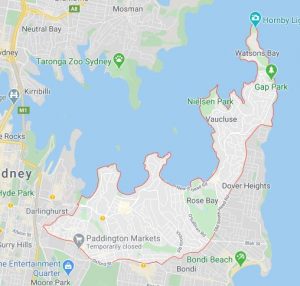
Sydney suburbs managed by Woollahra Council: Bellevue Hill, Darling Point, Double Bay, Edgecliff, Paddington, Point Piper, Rose Bay, Vaucluse
In most circumstances, the tree roots enter through leaking pipe joints and damage the sewer drains and stormwater pipes that take wastewater off your property. Many homeowners hold Woollahra Council responsible for their blockage and expect they will clear their blocked drains for free because the Council own the trees.
Well, in some cases they do!
But, Woollahra Council gets their income from you the ratepayer, and as you would expect, they have guidelines for spending ratepayers money to fix your blocked drains.
If you live in one of the suburbs managed by Woollahra Council, click here to see the Woollahra Council Wastewater Policy.
The top points are that you the homeowner:
Must have a sewer service diagram for your home.
Must maintain your sewer pipes.
Must prevent sewer blockages.
Must prevent sewerage from escaping into the environment.
May be entitled to the Council plumber clearing your blocked drain.
The Lone Drainer and Pronto. Coronavirus Diaries Madrigal Communications
The Lone Drainer Coronavirus Diaries has been a chance to check in with small businesses to find out how they have been getting on during the Coronavirus lockdown of 2020.
In this clip, I speak with Tim Entwisle from Madrigal Communications.
Tim writes up tender documents for Aussie companies that are applying for large government contracts in the construction, energy and telecom sectors.
I’ve known Tim for about eight years. He’s a Rugby fanatic, an ocean swimmer, a wordsmith. Tim loves language, and he blogs about our language. He has written several blogs about Coronavirus.
Check them out on his website. https://madrigal.com.au/word-of-the-week-blog/
Tree roots don’t know about Coronavirus
Sydney April 14th 2020
Easter is over for another year.
Although our towns are slowing because of the Coronavirus, and we are quickly changing our daily home and work habits, here at The Lone Drainer and Pronto, we are still working away.
Working from home is putting our normal facilities under a little more pressure. That means the internet, the exercise areas and our bathrooms.
With all that extra baking and comfort meals, our sewers are under a more significant workload. Tree roots don’t know about Coronavirus, and still seek food and water in the sewer pipes they can grow into.
So, if you hear your drains gurgling don’t ignore them. They are asking for help.

Dormant, but active underground
More rain please
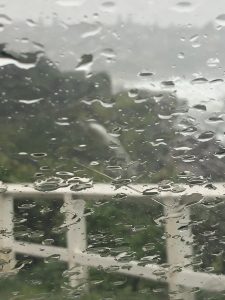
The rain has kept emergency plumbers on their toes.
If you need help with a flooding emergency, please call us.
Meanwhile, blow the rain to the west.
Our country cousins need it!
Storms bring blocked drains
The well-needed rain that arrived in Sydney over the last few days has created many blocked drains and grates that can easily be fixed.
Take the opportunity in between showers to check any pits or drains around your home that may be blocked by leaf debris or dirt. Put on your gardening or washing up gloves to clean them out; it may save you from some unexpected flooding.
The blocked drain shown here was covered by leaves and gum nuts blown off in the storm. It wasn’t able to cope with the deluge of water that caused the garage to flood.
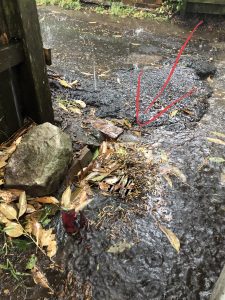
If your roof gutters are full and overflowing, it may be leaf debris and twigs or even a tennis ball from the summer back yard cricket series blocking the gutter outlets.
If you choose to put a ladder up to the roof gutters to have a look, please be very careful.
Take care climbing on your roof.
It may be very slippery!
World Toilet Day 2018
November 19th 2018 is World Toilet Day.
With the population of the world now at approximately 7.7 billion people, many of us would be surprised to learn that over 4.5 billion people do not have a clean toilet or running water to wash their hands.
According to a UN report, a third of schools worldwide don’t have any clean toilet facilities and nearly 1 billion school children don’t have hand washing facilities.
It seems extraordinary that in a world where most people have a mobile telephone approximately 892 million people have to squat out in the open.
This, of course, has knock-on hygiene effects with the pollution of domestic drinking water being a direct contributor to many cases of sickness, disease and even death for those less fortunate than us.
Today, as you use your dual flush toilet in the privacy of your home, workplace or school, spare a thought for these people.
You may also consider buying Who Gives a Crap toilet paper. Who Gives a Crap donate 50% of their profits to help build toilets for those who have none.
Use Toilet Paper not Tissues
Here is a simple demonstration by Tristan from The Lone Drainer And Pronto showing why you should use toilet paper rather than facial tissues in the bathroom.
Toilet paper breaks down when it gets into water, whereas facial tissues bind together rather than falling apart.
Beware, facial tissues can cause a costly blocked drain.
Use toilet paper, not tissues.
Why you should look inside your pipes
You’ve got a blocked drain and your plumber puts a camera in the drain to see whats going on down there!
What happens after that?
Plenty of homeowners don’t get to see the footage their plumber has taken of the inside of their pipes. For some reason, the plumber chooses to keep what is going on in your pipes a secret from you.
Why?
Like any medical scan or x-ray of your body, it shouldn’t be kept a secret from you.
You should be able to see what’s going on in your drains so you can get a greater understanding of how the drains work. Or don’t!
Then, you can make an informed decision about how to repair your pipes and get other professional opinions on how to do that.
There are many ways to maintain your pipes and drains.
So if your plumber recommends a particular method of pipe repair after he puts a camera in your drains then tells you what he saw… but doesn’t show you, ask him for a copy of the pipe survey.
After all, he has billed you for it.
This survey shows a section of re-lined pipe with earthenware pipes and tree roots.
Back to work for a New Year
Many of us are back to work today January 4th 2016 after our Christmas break. We have had time, love and laughter with family and friends, rest and re-charge.
We’ve had a few plumbing emergencies that couldn’t wait. Blocked drains, burst water pipes and a rusty galvanised gas service that led to a complete pipe re-run on New Years Eve.
People are grateful to have help from an emergency plumber.
They also like to laugh and learn. I recommend you watch this clip for Poo Pourri. This is what I call Furk! – Having FUn at woRK
BTW After the laughing stopped, I ordered some Poo Pourri. It works! If you’d like some let me know.
Think before you flush the toilet.
Christmas 2015 is upon us. This is the time most of us slow down and enjoy the festive season and the Aussie summer. But please think before you flush. We are here to help you with any plumbing emergency over the Christmas holidays.
A blocked drain can be caused by putting the wrong things down your sinks, pipes and toilets. This can leave you with an expensive plumbing bill to unblock your pipes. It can also lead to an increase in the amount of waste moving through our sewage treatment works at Malabar, Bondi and Manly.
These extra items have to be screened out, dumped in bins and trucked off to a landfill site. Unsuitable flushed items can lead to sewer overflows and problems in the sewer mains which are simply caused by small items getting caught and blocking the network.
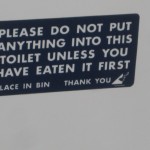
Don’t do it.
An overflowing sewer main in your property or worse, in your home, is very unpleasant. So, keep it simple and flush only the three Ps….. pee, poo and paper.
Happy Plumbers + Great Service = Happy Clients
We have a great team of plumbers here at The Lone Drainer and Pronto! They are good at their job. They Love their work. We call it “Furk”! Having FUn..at..woRK
On Monday afternoon, 27th October 2014, I got the following email:
Hi Dave,
Thank you so very much for taking my phone call early this morning and organising Chris and Leigh to come to my house so quickly.
Chris and Leigh arrived, knocked on my door, introduced themselves with smiles and put me at ease that my sewerage problems would be fixed.
Such a relief. I could not have had nicer people to arrive on my door step. Both well mannered and very pleasant people to talk to.
I also had a problem with my kitchen sink tap. Unfortunately I had to leave Chris at the kitchen sink as I had to go to work. He did a good job and I now have a brand new tap looking at me! Both men were very efficient.
Again, thank you for being so prompt and getting the job on its way.
Kind regards,
Julie B. Randwick NSW

Leigh and Chris with Plunger
My Plumber is a Wizard
Sometimes its great to laugh at ourselves.
I’ve always loved the Wizard and this is a good one!

Be careful what you put in your toilet!
Last night we had an emergency call out to a client that we had helped recently. But first, let me paint a picture.
Two weeks ago “Kath”, who lives in a 1920s Coogee building had a blocked shower. Kath said it had been slow to drain since she moved in 6 years ago. A little investigation revealed the original pipes ran through the concrete floor and were corroded internally. Corrosion is one of the drawbacks of living so close to the ocean.
Anyway, The Lone Drainer and Pronto Super-heroes Leigh and Chris, got her shower running “better than ever before”. In fact Kath rang our office to compliment the boys on their Ps, Punctual and Professional.
So I was surprised to get her evening call-out. It turns out her toilet was blocked! But the shower and basin were draining better than ever before. The building has a 2 pipe system; the shower, bath, basin and kitchen sink run down one pipe, while the toilet waste goes down the other.
After a little investigation we found there were tampons caught on the corroded inside of the waste pipe. It was reasonably simple to clear the blockage. Although Kath was a little embarrassed we assured her the best way to prevent it happening again was to follow this simple rule.

A plumbing emergency and ducks we’ve rescued
We were called out to this plumbing emergency that brought an unexpected surprise.
Our client had a blocked drain and when we had just about completed that repair, cutting tree roots from her sewer pipes, she called out because she needed a hand in her back yard.
A mother duck that had been nesting in her dense rear garden had chosen today to take her babies for their first swimming lesson. The ducklings took to the water like ….. well, ducks to water. The only problem was that the water level in the pool was a little low, they couldn’t get out of the pool and they were getting very tired.
Our attempts to rescue them by hand and with the pool scoop, brought a tirade of squawking and flapping of wings from the mother duck. She didn’t want us anywhere near her babies! We found a plank in the back shed which we put in the pool and then draped an old towel along the length of the plank, then stood back.
When mother duck settled down she could see we were trying to help, she led the baby ducklings up the plank and after checking they were all out, she herded them back to the nest in the dense undergrowth.
She gave us another flurry of feathers when we tried to check on the babies.
Every day brings another adventure!

Common pipelines; easements, ownership and liability #2

One recurring topic of 2010 is the Ownership and liability of common water, sewer and gas pipes.
When we send out an emergency response team to a ruptured gas or water pipeline or an overflowing sewer, the first thing our team thinks about is rescuing the property under threat. Often, it is after the emergency that ownership and liability of the problem are hotly debated.
This series of 3 blog posts is aimed at clarifying some of that debate.
Our friends at the Law Reform Commission have helped to clarify this interesting subject and in part it reads:
A user of a service may attempt to disconnect the joint service and force other users of the service to bear the cost of a direct connection to the main service. Such action will however, be illegal unless conducted in accordance with the Water Board Act 1987 (Water Board (Plumbing and Drainage ) Regulation 1989),2 or a court order declaring that the common user of the service has a right to discontinue the service.
The creation of permanent rights of access is seen as a means of avoiding problems of access in respect of utility services, and applications have been made to the courts over the years to have access to and over utilities such as water pipes and sewers recognised as easements of necessity. The courts have, however, gone to considerable lengths to hold that although such an easement may be considered by a landowner to be essential for the reasonable enjoyment of property, it is not an easement of necessity, because at law, easements over such services are not considered necessary to the land itself.
Although DP 22 raised the possibility of statutory recognition of these “trespassing” services as a means of rectifying the problem, the Board of Surveyors pointed out in their submission that few authorities know with any exactitude the location of their service lines. Consequently, the Board of Surveyors opposes the creation of statutory easements over them until such time as they are properly defined on title. The Commission agrees that such a step may be expensive and premature at this stage. It would seem desirable however, that steps are taken in the long term by the relevant authorities to locate such services, properly record them and establish the appropriate rights over them.
Toilet Paper or Bidet?
The Harsh Reality of Using Toilet Paper Rather Than Washing with a Bidet
Having travelled Europe extensively, one gets used to a bidet. Coming back to Australia made some of the queried group bemoan the loss of the bidets they got so used to. The question as to whether or not it was environmentally responsible to throw tissue paper in the toilet or in the trash was raised.
The questioner remarked that they were bothered by how much tissue paper is used by a single family and they wondered just what it takes to remove the paper from sewage lines and from the treatment plants. Some experts were asked this question and they came up with answers to those questions and wonderings. Of course, all the experts came from the plumbing services fields and would know best how to deal with this problem; they gave opinions on what they felt were the best options. We also inquired at several plumbing services and a couple of places that offered a professional plumber.
When attached to a sewer line that is maintained and repaired by a city, the toilet paper is decomposed through the processing system. In order to break down any solid matter that is in the waste water, methane is used. Ways to harness this methane gas is being researched and tested to make this process more efficient. Toilet paper blockages in the sewer lines don’t happen often, but consider the fact that the blockages would be reduced if a bidet were used.
Cleaning one’s self with toilet paper in a home that is hooked to a septic tank can cause all sorts of nasty things to happen inside your house when blockages happen. Plumbing services have to be called in to remove the offending paper, and then any crack in the pipe or seam that is a little rough can gather another huge wad of toilet paper and clog everything up again. This is good news for the plumber; they appreciate the business, but for the home owner, this is a costly repair.
Bidets would do away with the need for toilet paper and end the numerous blockages that are created when someone shoves a huge wad of paper down the toilet.
If you are really lamenting the loss of the bidet, call in the plumbing services and get your bidet installed. Almost any plumber will be more than happy to install a bidet for your home. With a bidet of your own, you will reduce the amount of paper that is used, reducing the amount of trees used in the process.
Giving up the toilet paper is much more sanitary than giving up the bidet. The bidet allows for a cleaner person while not using as many resources.
In the end it was decided that the bidet is the best way to go environmentally, for the best sanitation and for low repair bills.
Trumpets and toilets
The 2010 Pumper and Cleaner Environmental Expo held in Louisville Kentucky February 24th-27th 2010
We went to Louisville to see how the best of the best plumbers in the United States, look after their clients. If you have blocked sewer drains, blocked sewer pipes caused by tree roots in your pipes, or tree roots in your drains, or overflowing toilets, the experts we met at Pumper Cleaner 2010 know how to fix your problem.
As the name of the show suggests, the focus is on pumping and cleaning up on that other topic very close to my heart, sewerage, that’s right S – – T; because in our game S – – T happens.
Our short YouTube video shows some of the equipment on display and how it is used.
Enjoy the trip!
Music by Chuck Mangione, “Give it all You’ve Got”
So you think you’re having a bad day?
Today’s blog post is from Exponential Growth Strategist Dr Marc Dussault. (http://www.MarcDussault.com).
Some days when you think you are home free, there is a trap waiting for you.
Have you ever had a day like that?
Marc takes business growth very seriously, but insists we plumbers take time to have a laugh, even at our own expense.
Thanks for the medicine Dr!

http://www.ExponentialPrograms.com
Tree Roots Growing In Sewer Pipes
Are the Roots of my Neighbours Trees, or the Trees Growing Out the Front of My Property, Growing in my Sewer Pipes?
One of the major plumbing concerns is trees that send roots into sewer lines, especially in homes that were built over twenty years ago. Trees are equipped with water finding capabilities that send tiny roots in every direction in a quest for water. The trenches where there are sewer lines do not usually have hard packed soil therefore, roots gravitate to this loose soil. When these roots invade from trees growing out the front of your property or from across the street and get into the sewer system, it is time to call in the professionals who do plumbing that know how to deal with a blocked drain. Read More
Expensive Kitchen Sink Repairs
During an Advanced Business Mastery session I had the pleasure to meet Peter August from Australian Bullion Company, www.austbullionco.com.au.
Peter’s knowledge of Gold and other precious metals, his wealth of experience, and his stories about the mystical and precious metals he deals in, had us all amazed.
In the early 1980s, when the price of gold was around $400 per ounce, I was called to an elderly lady’s home to assist with a blocked sink. I removed all the usual cleaning products from the blocked drain; detergent, sponges and a nest of plastic bags.
Two of the plastic bags were surprisingly heavy to lift. I needed both hands and all my strength to lift these two bags onto the kitchen bench. Inside each of the bags was a gold bar roughly the size of a house brick. I felt like I was in Aladdin’s cave! The elderly lady was standing over my shoulder. She didn’t offer any explanation…. and I didn’t ask.
I went out to the truck to get some more tools to finish the plumbing repairs and when I came back in, the bags and their precious contents were gone.
Based on the standard mass of a gold bar and the price at the time, I estimate that one of those bars would have been worth about $160,000.
Meeting Peter reminded me of this incident. After retelling it to him, he pointed out that earlier this month (September 09) gold had reached a price of US$1000 per ounce, and then estimated that one of those bars would have been worth at least US$400,000.
Not a bad mornings work.

Peter J August, Managing Director of Australian Bullion Company:
Holy S_ _t! A Gondoliers impressions
Today’s post comes courtesy of the World Famous Venetian Gondolier, my mate Giovanni Giudice.
I met Gio in the summer of 07 -08. He was visiting Australia, learning to surf and was escaping the Venetian winter because “business is slow”. Gio was staying in Coogee at the home of a client who funnily enough had a blocked drain. We hit it off straight away; I told him about places to visit along our beautiful coast and Gio in return told stories of the romantic city of Venice, Italy.
Invariably the conversation got back to blocked sewers and blocked drains and how different it would be to deal with a blocked drain in Venice, compared to being a Sydney plumber. Upon his return to Venice, Gio answered my question with a series of photos he took on the way to his gondola one morning.
Below are the photos he sent of a septic boat, pumping the waste from the Palace of the Bishop of Venice.
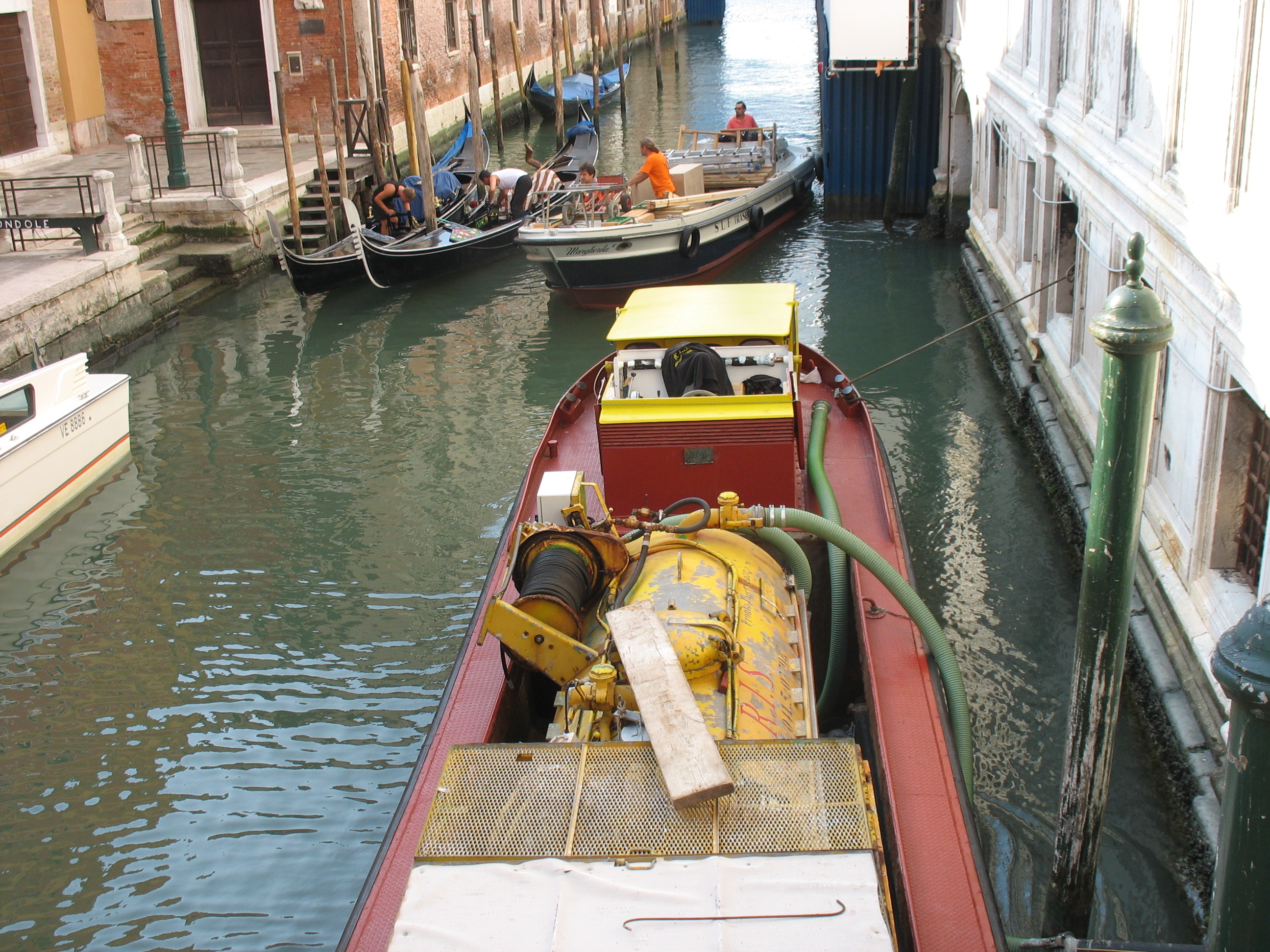

If any of our readers are lucky enough to be travelling to Venice, ask for Gio’s contact for the best gondola tour of that beautiful city.
Eradicating tree root problems
Tree roots are a very common cause for blocked drains, however the extent of damage that tree roots can cause before a problem is recognised, can vary greatly. To get rid of a tree root problem you must know what condition of the pipes are.
The Lone Drainer and Pronto has a number of weapons in its arsenal to combat those all-invasive tree roots; but in order to decide on the correct solution for the situation at hand, it is good practice to know what is happening with the drain. In many cases we insist on the use a special drain camera to view the location of the blockage and the condition of the connecting pipes.
The drain cameras we use are an enormous cost saver and allow us to determine the condition of underground pipes. Our pipe locating equipment shows us where to dig, minimising the need for large excavations to locate them. This reduces the guesswork and helps us make informed decisions on how to treat your particular blocked drain. In 2009 it makes great sense to use the technology available to us; it helps us help you!
https://www.thelonedrainerandpronto.com.au/plumbing_services.php
George Bush Toilets
The reign of US President George W Bush has come to an end, but as this piece of urinal art proves, when it comes to “Dubya”, many people will never grow tired of taking the piss….

The creator of this fantastic piece is a subscriber to “toilet humour“. His bathroom creations are unbelievable; I will soon share with you some of his other works.
And for all you plumbers, imagine clearing a blocked drain in the outlet of this urinal; be careful now!
www.TheLoneDrainerAndPronto.com.au
PVC Pipes Blocked by Hills Weeping Fig
The Hills weeping fig (ficus microcarpar var.) is a beautiful tree which in some areas provides a shady archway for many streets in our Sydney Eastern suburbs.
But why are the residents of these streets pulling out their hair?
The Hills weeping fig is like Jekyll and Hyde.
Dr Jekyll brings shade in summer; tree lined streets become a breezeway, cooling our homes as their majestic branches cast shade and protect us from the searing summer heat, attracting birds to feed on their fruit twice a year.
But, Mr Hyde is lurking. Those same fruit bring flying foxes…and other mysteries.
My interest in this tree is the power of its root system. Their reach is widespread, sometimes 3 or 4 or more times wider than they are high. The root system will move stone walls, lift concrete footpaths and driveways and of course invade sewer and stormwater pipes. The roots from this tree just keep on coming after they are internally pruned with an electric eel or “Rattlesnake” high pressure water drain cleaner.
Last week we attended to 4 tree root sewer blockages directly caused by the Hills Weeping fig.
The 2 blocked sewer pipes that particularly interested me were PVC sewer pipes.
Why is that interesting, I hear you ask?
Well… tree roots don’t grow into PVC pipes! …..or do they?
The Kensington blocked drain was in an established housing estate about 10 – 15 years old. The townhouse in question had no previous blocked drain history. The Hills weeping fig was about 30 metres away. Its root system had grown up to this house and had actually grown into the PVC pipeline through a screw-on cap that we plumbers call a cleaning eye. The fine roots had grown into the cap thread and multiplied inside the pipe thus causing the sewer blockage.
The Bellevue Hill blocked sewer was similar.
This house was built during the year of Sydney’s 2000 Olympic games after the long term owners, were tired of having blocked sewer pipes every 3 months, and tree roots “growing up through the back of the toilet”, amongst other reasons.
During the rebuild all the pipelines were installed in PVC pipes and fittings. The house finish was state of the art plumbing fixtures, with beautiful sandstone tiles around the outside of the house. All the pipes were concealed! No cleaning eyes! Why would we need access to the pipes as they have all been installed in tree root proof PVC? The nearest fig tree was 30 odd metres away.
Well, what started as a simple blocked floorwaste, grew to removing that beautiful toilet suite to clear the blocked sewer pipe. We used the “Rattlesnake” high pressure water drain cleaner to remove tree roots from the blocked pipeline. When the blockage was cleared we carried out a camera survey of the pipeline. About 14 metres downstream the camera showed the remnants of the cut tree roots, but just as important, our drain camera survey showed the PVC pipe had been squashed. What was a round internal pipe, was now oval shaped with a crack in at least 1 of the fittings.
Who said tree roots don’t grow in PVC sewer pipes?
Beware Mr Hyde!
https://www.thelonedrainerandpronto.com.au/vaporooter.php
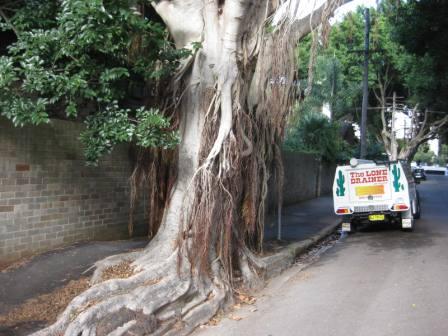
Hills Weeping Fig Tree
